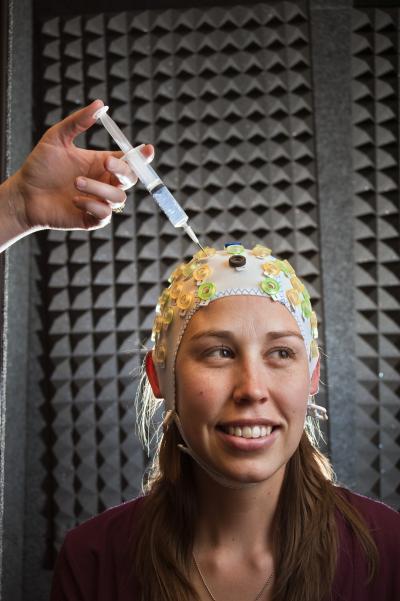About 90 volunteers spent nine to 16 hours over five weeks in testing for the memory training techniques study. Their first session developed a baseline for how well they remembered words or images. Most then underwent memory training for three weeks and were retested. A control group received no training. A second group practiced mental imagery strategy, thinking up vivid images to remember words and pictures. The final group went through "working memory" training to increase how much information they could handle at a time - that averages about seven items, such as digits in a phone number.
They monitored the test subjects' brain activity while they studied word lists, then used the EEG to predict who would remember the most information. Because researchers knew the average percentage of correct answers under various conditions, they had a baseline of what brain activity looked like for good and poor memory performance. The computer model predicted five of 23 people tested would perform best. The model was correct: They remembered 72 percent of the words on average, compared to 45 percent for everyone else, the first to demonstrate predictions based on the results of monitoring test volunteers with electroencephalography (EEG) sensors.

Susan Stevens-Adams of Sandia wears a cap dotted with electroencephalography (EEG) sensors that are injected with gel to make sure they have good contact. EEGs are used as part of a study into memory and memory training. Credit: Sandia National Laboratories/Randy Montoya
For example, "if you had someone learning new material and you were recording the EEG, you might be able to tell them, 'You're going to forget this, you should study this again,' or tell them, 'OK, you got it and go on to the next thing,'" said Laura Matzen of Sandia's cognitive systems group.
The study is part of a long-term goal to understand the Difference Related to Subsequent Memory, or Dm Effect, an index of brain activity encoding that distinguishes subsequently remembered from subsequently forgotten items. The measurable difference gives cognitive neuroscientists a way to test hypotheses about how information is encoded in memory.
Matzen presented the results of the first part of the study in April at the Cognitive Neuroscience Society conference in Chicago. She presented preliminary findings on the second part this summer to the Cognitive Science and Technology External Advisory Board, made up of representatives of universities, industry and laboratories who advise the investment area team managing the LDRD portfolio. The second part tested different types of memory training to see how they changed participants' memory performance and brain activity. One of the goals is to find out whether recording a person's brain activity while they use their natural approach to studying can predict what kind of training would work best for that person.
Preliminary results are encouraging. The computer model from the earlier study was used to predict who would perform best on the memory tasks, and the high performers did even better after memory training. "That's promising because one of the things we want to do is see if we can use the brain activity to predict how people react to the training, whether it will be effective for them," Matzen said. A next step would be "to use more real-world memory working tasks, such as what military personnel would have to learn as new recruits, and see if the same patterns apply to more complex types of learning."




Comments